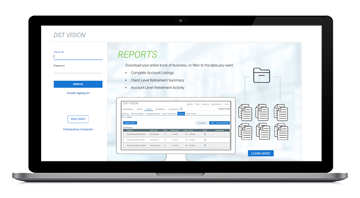Today's market character and the asset allocation implications
The character of our current asset markets can be described as a series of long, slow climbs in price followed by breathtaking downward smashes.

Long ago, one of my mentors taught me that the character of a market repeats. The character of our current asset markets can be described as a series of long, slow climbs in price followed by breathtaking downward smashes. Traders call these spikes waterfall events—such a nice, politely poetic phrase to describe what can seem like a disaster.
Examples were everywhere in 2015, and investors should get used to this character and expect 2016 to bring more of the same. Already, China-inspired market volatility has contributed to the worst opening week for U.S. stocks of any calendar year on record. Along with maintaining a sense of perspective, diversification—a combination of different asset classes, different investment styles, and different views implemented by distinct active managers—can be the best antidote for this type of challenge.
Big picture still appears relatively bright for long-term investors
Among developed countries, the United States continues to lead, and we expect 2016 to show some modest acceleration on the back of low oil prices, a healthier home-building market, and wage growth that is finally putting money in the consumer's pocket. A shallow trajectory for interest-rate hikes through 2016 shouldn't endanger this recovery. We remain mildly optimistic about the state of the global economy and therefore about prospects for risk assets, including global equity, real estate, and credit markets over time.
Our base case for the United States sees the economy continuing to plod along with little risk of recession over the next five years—a scenario that's good for risk assets. The optimist sees a modest cyclical acceleration into 2016 supported by U.S. housing market strength, low oil prices, consumer wage gains, growth expanding in the eurozone and Japan, and stabilization of the growth trajectory in China. For global equities, we expect returns in the mid-single digits annualized over our five-year forecast period-unremarkable, but better than our low single-digit expectations for U.S. Treasuries of modest duration.
Low inflation numbers make these modest nominal returns quite respectable by historical standards. One of the biggest anomalies in the capital markets today is that U.S. Treasuries have some of the highest real, or inflation-adjusted, yields in the world: The U.S. dollar is simultaneously a safety currency and a high-yielding one at that. In inflation-adjusted terms, there remains a case for value in U.S. government bonds, which can play a central defensive role in an investment portfolio.
In the short term, we remain cautious on equities of emerging markets, given the effects of the slowdown in China and the pervasive restructuring required across many developing countries; however, we're enthusiastic about local growth opportunities over the next five years. To be clear, we're not as positive on the asset class as a whole—it no longer represents a homogeneous growth story. Rather, our longer-term favorable view is based on a belief that valuations in particular countries and select sectors are compelling. Many industries will remain extremely challenged. While we may see a cyclical bounce in oil and stabilization in other commodity prices that would benefit emerging markets broadly, we would view that turn as temporary. Emerging-market equity remains a stock picker's asset class for now.

Expect more subdued results from fixed income
On the whole, our current forecast calls for lackluster fixed-income returns relative to those of the past decade. We're more positive on credit sectors than on developed-market government-backed debt in view of the negative yields offered by many European sovereign issuers. We continue to monitor how the divergence of central bank policy through major markets will play out in 2016. We estimate rising volatility in foreign exchange and interest rates as a consequence. We believe finding yield and keeping duration short will be prominent themes in this context.
Cautious on commodities
We remain cautious now but are moving toward a more neutral stance on commodities based on the notion of a cyclical bounce upward in the global economy. The pervasive price declines over the last three years are likely ending, and the cyclical upturn in developed economies should restore stability to most industrial and agricultural commodities. After years of negative price trends and a sustained sentiment of aversion, even a modest rebound would prove stellar for those investors with commodity-related exposure. On the margin, there are opportunities in groups of quality companies with strong operating assets that control costs and focus on protecting or improving their balance sheets.
The current character of our capital markets is likely to remain with us us for some time, and we expect more price volatility in the months ahead—but that shouldn't alter an investor's long-range plan. No matter what the future brings, we plan to keep calm and to keep investing, emphasizing diversification across the world's traditional and alternative asset classes.
Important disclosures
Important disclosures
U.S. large-cap stocks are represented by the S&P 500 Index, which tracks the performance of 500 of the largest publicly traded companies in the United States. U.S. small-cap stocks are represented by the Russell 2000 Index, which tracks the performance of 2,000 publicly traded small-cap companies in the United States. International stocks are represented by the MSCI Europe, Australasia, and Far East (EAFE) Index, which tracks the performance of publicly traded large- and mid-cap stocks of companies in those regions. Total returns are calculated gross of foreign withholding tax on dividends. Emerging-market stocks are represented by the MSCI Emerging Markets Index, which captures large-, mid-, and small-cap representation across emerging-market countries. Core U.S. bonds are represented by the Barclays U.S. Aggregate Bond Index, which tracks the performance of U.S. investment-grade bonds in government, asset-backed, and corporate debt markets. U.S. high-yield bonds are represented by the Bank of America Merrill Lynch U.S. High Yield Master II Index, which measures the market of U.S. dollar-denominated, non-investment-grade, fixed-rate, taxable corporate bonds. Commodities are represented by the Bloomberg Commodity Index, which provides broadly diversified representation of commodity markets as an asset class. Gold is represented by the Bloomberg Gold Index, which provides representation of gold as an asset class. It is not possible to invest directly in an index. Past performance does not guarantee future results.
Diversification does not guarantee a profit or eliminate the risk of a loss.
The portfolio's performance depends on the advisor's skill in determining asset class allocations, the mix of underlying funds, and the performance of those underlying funds. The portfolio is subject to the same risks as the underlying funds and exchange-traded funds in which it invests: Stocks and bonds can decline due to adverse issuer, market, regulatory, or economic developments; foreign investing, specially in emerging markets, has additional risks, such as currency and market volatility and political and social instability; the securities of small companies are subject to higher volatility than those of larger, more established companies; and high-yield bonds are subject to additional risks, such as increased risk of default. Liquidity—the extent to which a security may be sold or a derivative position closed without negatively affecting its market value, if at all—may be impaired by reduced trading volume, heightened volatility, rising interest rates, and other market conditions. Please see the portfolio's prospectus for additional risks.
MF274876






